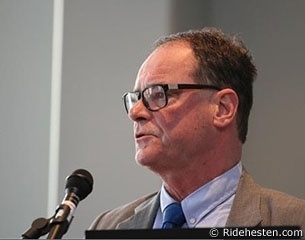
Ulf Helgstrand, president of the Danish Equestrian Federation and member of the FEI Constitutional Task Force, is proposing to take on the Danish model for the future structure of the FEI:
As member of the FEI Constitutional Task Force I am convinced that the structure of our federation could be useful for the FEI as well.
In reconstructing it is important to involve the administration in order to get a smooth modern functional structure where everybody, volunteers as well as employees, all know their duties competences, responsibilities and not least references. The CEO must be the only one who distributes the daily work among the employees. The volonteers must have a reference, but not being able to put more work in a department if it is not in agreement with the daily leader and a priority from the board.
One of the important reasons for the success in our federation is that all this is well defined, and I strongly believe that the difference between the structure of a well-organized federation and the FEI is very limited.
I often compare our national structure with clubs, districts, technical committees, board and administration etc. with the FEI's NFs, regions/continents, technical committees, administration, board etc. and I will explain in summary our reconstruction. It might be useful for the future structure also in the FEI.
We had until 2002 a board of 22 people including district representation (13 districts), technical chair representation (5 chairs). First we reduced the board to 7, where each member had a special responsibility for a department (clubs, sport, top sport etc). This ended up with endless discussions concerning budget and the priority in money distribution between the departments. This is logical but unhealthy so it had to be changed. Now we still have a board of 7, all generalists, and we are now able to see the federation as a whole and not dealing with or defending special interests.
The districts are now without political influence, but this was not an easy one. They have a "district council" and their meetings, twice a year, are attended and chaired by the vice-president (who by the way is appointed among the board members after elections at the GA). The purpose is to inform what is going on especially concerning new offers for the clubs. The districts are responsible for communication to the clubs, but also for the competition calender on district level, including district championships. When we alocate national shows and championships the council is involved together with the sports council. The most important reason that the districts accepted the lack of political influence was that they started to get confidence in what was going on in the federation as such, so there was no longer a reason to watch it carefully and interfere, and they were able to have influence on the sport in their respecitve district.
The "Sports Council" consists of the chairs from all the disciplines and they have a reference to the administration, but important also to the board in case of disagreements. Last but important as well: everebody in our organisation has job descriptions with references including all the volunteers.
If we look at our federation as the FEI, districts as regions/continents and the clubs as NFs I see a lot of useful similarities that might help the FEI to a succesful structure in the future.
Ulf Helgstrand
President
NF Denmark
Photo © Ridehesten.com
Related Links
Ulf Helgstrand on the Modernization of the FEI
FEI Constitutional Task Force to Identify Optimal Governance Structure
Ulf Helgstrand Celebrates 60th Birthday